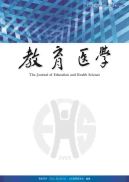Volume 60, Issue 4
Displaying 1-7 of 7 articles from this issue
- |<
- <
- 1
- >
- >|
-
2015Volume 60Issue 4 Pages 179-188
Published: 2015
Released on J-STAGE: October 01, 2021
Download PDF (871K) -
2015Volume 60Issue 4 Pages 189-197
Published: 2015
Released on J-STAGE: October 01, 2021
Download PDF (1935K) -
2015Volume 60Issue 4 Pages 198-205
Published: 2015
Released on J-STAGE: October 01, 2021
Download PDF (1735K) -
2015Volume 60Issue 4 Pages 206-215
Published: 2015
Released on J-STAGE: October 01, 2021
Download PDF (1147K) -
2015Volume 60Issue 4 Pages 216-220
Published: 2015
Released on J-STAGE: October 01, 2021
Download PDF (760K) -
2015Volume 60Issue 4 Pages 221-231
Published: 2015
Released on J-STAGE: October 01, 2021
Download PDF (851K) -
2015Volume 60Issue 4 Pages 232-235
Published: 2015
Released on J-STAGE: October 01, 2021
Download PDF (606K)
- |<
- <
- 1
- >
- >|
